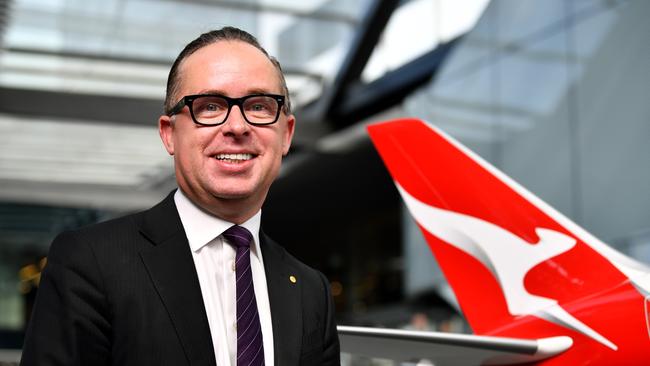Qantas full year pre tax profit falls 17pc
Sluggish demand for travel and soaring fuel costs have cut Qantas’ pre-tax profit by 17 per cent.

Qantas has flagged further capacity restraint in the domestic market in response to weaker demand for travel, following the airline’s 17 per cent dive in before tax profits for the 2019 financial year.
The Qantas Group recorded a $1.3 billion underlying profit before tax for the year, down from a record $1.56 billion for 2018.
Higher fuel costs and foreign exchange impact sliced $768 million from the bottom line, and the group also forked out $92 million for “accounting requirements” including employee leave entitlements.
Net profit was down 6.5 per cent to $891m with all segments of the business other than Qantas Loyalty recording a fall in earnings before interest and tax (EBIT).
Qantas Loyalty, which includes the frequent flyer program, posted EBIT of $374m, up from $345m.
In contrast, the Jetstar Group saw earnings fall from $457m to $370m, Qantas International earnings dropped from $398m to $285m and Qantas Domestic slipped from $765 to $740m
Group CEO Alan Joyce said “mixed market conditions” meant the 2019 performance was “particularly positive” and showed the strength of the individual businesses.
“Domestically, our dual brand approach with Qantas and Jetstar continued to give us a leadership position in the corporate, premium leisure and budget travel categories, all with strong margins,” Mr Joyce said.
“Qantas International has improved its competitive position by evolving its fleet, network and partnerships. We’ve carved out some unique advantages like the Perth-London route, and there is a lot of value still to be unlocked through our alliances.”
Mr Joyce said there was an ongoing weakness in demand from the telecommunications and financial services industries, and also in the “price sensitive” leisure market.
Although the downturn was being mostly offset by the strength of the resources sector, premium leisure and small business, Qantas forecast flat to slightly negative growth in domestic capacity, and a modest 1.5 per cent increase in international capacity.
Competitor capacity was expected to decline 1 per cent in the first half.
Internationally, Qantas was continuing to explore the business case for its “Project Sunrise” ultra long-haul, flights with several research flights using new 787-9s to take place before the end of the year.
In the short term, capacity would be reduced on Hong Kong routes in response to a 10 per cent plunge in demand due to violent protests in the territory but Mr Joyce said he expected that would rebound quickly.
He said Qantas continued to deliver strong shareholder returns with the board approving a fully franked dividend of 13 cents a share.
An off-market buyback was planned worth approximately $400 million, which would bring the total reduction in shares on issue in the last five years, to 30 per cent, or almost a third.
“That’s the most of any company in the ASX All Ordinaries, and improved our earnings per share significantly,” Mr Joyce said.
Shares in Qantas climbed strongly in morning trade on the back of the results’ announcement to be up 3.3 per cent or 21 cents, at $5.975 at midday.
Meanwhile, Qantas employees would be rewarded with a staff travel bonus worth $1250 “which would take a family of four from Sydney to Honolulu on Jetstar”, Mr Joyce said.
There was no “cash bonus” following on from last year’s protests against a $2000 reward which was linked to employees signing new enterprise bargaining agreements.
Mr Joyce said the fuel-efficient 787s were making an immediate difference to the financial performance of routes on which they were operating.
“Perth-London remains our most successful route launch in our 99-year history,” he said.








To join the conversation, please log in. Don't have an account? Register
Join the conversation, you are commenting as Logout